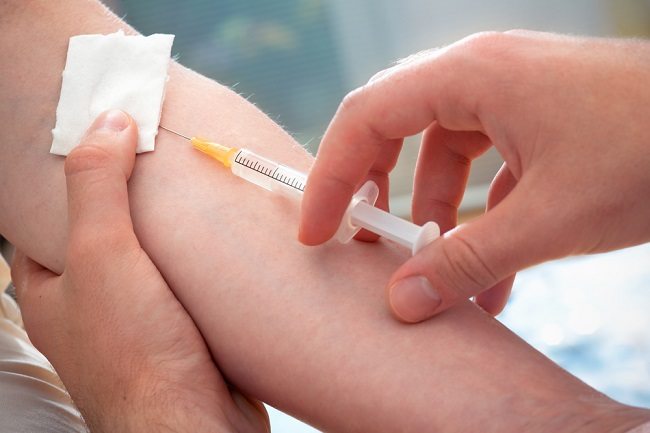Insulinomas are tumors that grow in the pancreas. The pancreas is an organ in the digestive system that produces the hormone insulin. Insulin is needed by the body to regulate sugar levels in the blood. Under normal conditions, the pancreas makes insulin only when the body needs it. Insulin production will increase when sugar (glucose) levels are high in the blood, and will decrease when glucose levels are low.

But in people with insulinoma, insulin continues to be produced by the pancreas without being affected by glucose levels in the blood. This condition can lead to hypoglycemia (glucose levels below normal limits), with symptoms such as dizziness, blurred vision, and decreased consciousness.
Insulinomas are rare tumors and are treated through surgery to remove the tumor. After the tumor that causes insulinoma is removed, the patient's health condition will recover.
Symptoms of Insulinoma
Symptoms of insulinoma vary, from mild to severe, depending on the severity of the disease. Although the symptoms of insulinoma are somewhat difficult to identify, in general the symptoms of this disease are:
- Dizzy
- Weak
- Sweating
- Hungry
- Blurred or double vision
- Weight gain suddenly
- Mood (mood) often changes
- Feeling confused, anxious, and irritable
- Tremor (shaking).
In severe conditions, seizures may occur. Tumors also interfere with the work of the brain and adrenal glands, which play a role in regulating heart rate and stress. In addition to seizures, severe insulinoma symptoms can range from heart palpitations, to coma.
Although rare, tumors can enlarge and spread to other parts of the body. In this condition, the symptoms of insulunioma can include diarrhea, abdominal or back pain, and jaundice (jaundice).
Causes of insulinoma
The exact cause of insulinoma is not known. These tumors are more common in women than men. The susceptible age for this tumor is 40-60 years.
Although the exact cause is not known, a number of factors that can increase a person's risk of developing insulinoma are:
- Multiple endocrine neoplasia type 1 or Werner's syndrome, is a rare disease in which tumors grow on the endocrine glands, intestines, and stomach.
- Neurofibromatosis type 1, is a genetic disorder that causes impaired cell growth so that tumors grow in nerve tissue and skin.
- Tuberous sclerosis, These are noncancerous tumors that develop in many places, such as the brain, eyes, heart, kidneys, lungs, or skin.
- Von Hippel-Lindau syndrome, is a genetic disorder that causes the growth of a collection of tumors or cysts (pouches filled with fluid) in a number of organs, such as the adrenal glands, pancreas, kidneys, and urinary tract.
Diagnosis of insulinoma
The symptoms caused will be the basis for the doctor's suspicion that a patient has an insulinoma.
In addition to checking the patient's symptoms, the doctor will also strengthen the diagnosis through blood tests to check blood sugar and insulin levels. Blood tests aim to see:
- Hormones that interfere with insulin production
- Drugs that can trigger the pancreas to produce more insulin
- Proteins that function to inhibit insulin production.
If the blood test results point to an insulinoma, the doctor will recommend further tests. In this follow-up examination, the patient will be asked to fast for 48-72 hours. The patient will be hospitalized in a hospital so that blood sugar can be continuously monitored by a doctor. The doctor will monitor the patient's sugar and insulin levels every 6 hours. The ratio of these examinations will be assessed by a doctor and become the basis for diagnosing insulinoma. Examination with a CT scan or MRI is also used to assist doctors in determining the location and size of the tumor.
If the tumor cannot be found through both procedures, the diagnosis can be made through an endoscopic ultrasound procedure. In this procedure, the doctor will insert a special instrument in the form of a flexible tube that is long enough into the mouth to reach the patient's stomach and small intestine. This tool will generate and convert sound waves into visual images, to see conditions in the stomach, especially the pancreas.
Once the location of the tumor is found, the doctor can take a small amount of tumor tissue as a sample. This sample can later be used to determine whether the tumor in the pancreas is cancerous or not.
Insulinoma Treatment and Prevention
Surgery is the main step to treat insulinoma. The technique used can be either laparoscopic or open surgery. Laparoscopy is performed when only one tumor grows. In a laparoscopy, the surgeon will make a small incision in the patient's abdomen and insert a special instrument in the form of a tube with a small camera at the end, which helps the doctor in removing the tumor.
Meanwhile, in insulinomas that have multiple tumors, surgery is performed with open surgery to remove part of the pancreas that is overgrown with tumors. At least, the pancreas needs to be spared 25% to maintain the function of the pancreas in producing food-digesting enzymes.
Ten percent of insulinomas are malignant (cancerous), so surgical removal of the tumor alone is not enough to treat it. Additional treatments to treat malignant insulinoma are:
- Cryotherapy - a procedure that uses a special liquid to freeze and kill cancer cells.
- Radiofrequency ablation - uses heat waves fired directly at cancer cells to kill them.
- Chemotherapy - cancer therapy by giving drugs to kill cancer cells.
Complications of insulinoma
The following are complications of insulinoma that can occur:
- Recurrence of insulinoma, especially in patients who have more than one tumor
- Inflammation and swelling of the pancreas
- Severe hypoglycemia
- The spread of malignant tumors (cancer) to other parts of the body
- Diabetes.
Insulinoma Prevention
Prevention of this disease is not known. However, you can make efforts to keep your blood sugar levels within normal limits. These efforts include reducing red meat consumption, consuming fruit and vegetables, exercising regularly, and quitting smoking.









